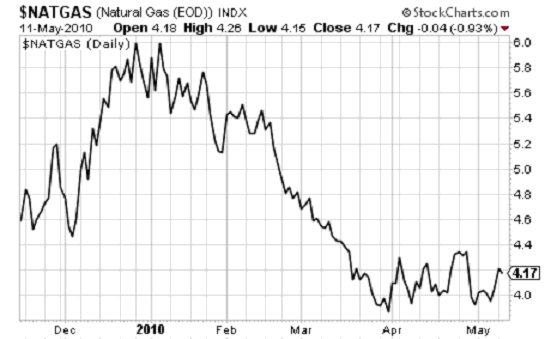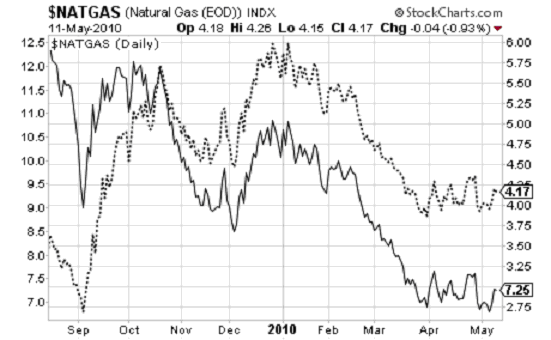- A cheap, ignored commodity
- The world’s worst ETF?
- Ignore Gold: Here’s the Commodity to Buy NOW
As I said yesterday, I don’t
like telling you to buy something when it’s at or above its nominal highs. So, I won’t. With gold now selling for over $1235 an ounce – above its all time
previous highs of $1224, there’s no reason to ring the bell right now. If you were among the lucky few to buy gold
and gold stocks in the past, then I wouldn’t sell either – but I wouldn’t
advise building or adding to a position in gold right this hot second.
By the way, I’d like to hear
from you – where do you think gold is headed? What percentage of your portfolio is in gold? Drop me a line at
[email protected]
I believe gold will likely
move higher, but buying at the highest highs in hopes that it will immediately move
higher is just not good investment sense.
Instead, I’d like to draw
your attention to a commodity that’s not making headlines today. It’s not on CNBC, or gracing the front page
of the Wall Street Journal. Once a story
is well-covered by the mainstream media, it’s not really my job,
or in your best interest, for me to continue shining a light
on it.
I don’t
know about you, but I like buying investments when they’re cheap, ignored and in
a sector that’s growing like gangbusters.
That’s why, while everyone
else is clamoring and gushing about gold, I want you to take a look at a
commodity that’s dirt cheap: natural gas. The chart below represents the last 6 months of natural gas prices:
You can see how natural gas
prices have been knocking around between the high $3 level and the mid-$4
level.
So natural gas is range
bound between those two prices. The
problem with a commodity being range bound at such a low price is that it’s tough
for producers to stay profitable and make plans for future production. They’re likely to sit on supply instead of
pump it out of the ground. That’s
especially true for natural gas. You
can’t store it very easily. You’re
either pumping it out of the ground and putting it into a pipeline for
immediate delivery, or – well that’s basically it. Sure, storage tanks can be used – but why
build storage tanks when you can leave the gas in the ground?
I’ve been doing research on
different natural gas investments, and the one that always comes up is the ETF,
the United States Natural Gas Fund (NYSE: UNG).
After
being launched almost three years ago to the day, this ETF has done little but
lose money. It might even be designed to
lose money. I’m not sure yet though, and
I’m working on a full report on this ETF with one of the best traders I
know. More on that in the next few
weeks…
But here’s the case against
UNG, so far:
Even when natural gas prices
more than doubled between September of 2007 and July of 2008, UNG only made
about 90% gains. So this ETF seems both
incapable of keeping pace with gains made in the price of natural gas – but
even worse, it seems to magnify dips!
Natural gas briefly sold for
close to $14 per thousand cubic feet in 2008. Today, it sells for $4.17. But
UNG slipped from $63 down to $7.25. So
while the commodity fell 70%, the ETF dropped 89%.
That’s not good.
But it gets worse for UNG. Take a look
at this chart, which plots natural gas prices as a dotted line, and UNG as a
solid line:
At the same time natural gas
prices have gone from $2.75 up to $4.17, UNG actually fell from above $12 down
to $7.25.
It’s maddening! If I were a UNG shareholder, I’d
be on the phone asking these fund managers how their ETF managed to drop nearly
50% while the underlying commodity almost doubled in price. Is the fund just poorly designed, or is it
actually designed to make it’s holders lose money?
I’m not sure yet. But in the meantime, it’s abundantly clear
that UNG has failed to make money for investors who are bullish on natural
gas.
As I said, I will be doing a
full write up on why UNG has fared so poorly, but in the meantime, you can click
here to read a report about my five favorite energy investments for the
moment.
Good investing,
Kevin McElroy
Editor
Resource Prospector
 Facebook
Facebook
 Twitter
Twitter

